We are in an era of digital transformation. The emergence of new technologies is rapidly transforming the way we approach design, with firms utilizing computer software more heavily than ever before. Does this mean the jobs of landscape architects are soon to be replaced by automation? Probably not, but it will challenge us to do things differently. Formerly of Clark Condon at the time of this video and now as Senior Associate at TBG Partners, self-proclaimed “tech nerd” Chris Gentile put it, “In order to maintain relevance, we must adapt.”
At the Land8x8 Lightning Talks in Houston, TX, Gentile explains why he has embraced automation, not only for its efficiency, but also because it frees up time for more creativity in the design process. Recognizing the benefits, TBG Partners is investing in automation technologies to improve design workflow, drive better decision making, and gain a competitive edge. I caught up with Gentile recently to see how he, as Digital Technology Manager, is leveraging automation and what advice he has for others.
Describe your role as Digital Technology Manager at TBG Partners and how you became interested in digital automation.
[CG] My current role at TBG as their Design Technology Manager reflects the investment TBG is making in technology. Design Technology is an emergent field in architecture, let alone being talked about in landscape architecture. It’s a risk journey, but I’m excited for what’s ahead. Firms that are dedicating these roles understand how they can leverage discoveries in technology to expand their portfolio to include more complex and rewarding work. TBG is forging that path.
I help navigate the firm through its digital landscape. I typically work with focused, cross-functional teams to discover and explore new technologies and how they can make us better. I support the goals of these teams by developing an improved user experience with tools and workflows operating across multiple platforms.
My interest in automation matured from my curiosity in technology. I never settled for the status quo and it frustrated me to do things inefficiently. As I mentioned in the Land8x8 talk, I had that voice saying “there’s got to be an easier way”. I took the path of doing the hard thing once – automating the task – rather than doing it the “easy” way a hundred times.
In your presentation, you encourage landscape architects to embrace digital automation. How has automation changed your approach to design and what opportunities will automation provide the profession?
[CG] I leverage automation more and more on every project I work on. It was real-world experimentation that eventually matured to something formal and eventually transformed the entire production workflow. It started simple with project-specific scripts but grew quickly to be dynamic and applicable for any project. There was a lot of effort involved to make that happen.
From my exposure to programming, my approach to design is more computational and rooted in systems thinking. I detach myself from the actual form of an object and focus on crafting the idea of how objects are managed and how they interact with each other. I am often surprised by the solutions; things I never would have thought of using traditional methods.
Automation provides professionals more time to think critically rather than spending their time on laborious, button-pushing tasks. Especially for young designers that are positioned to burden such roles, automation can allow them to fast-track their professional development as landscape architects.
Now that so many software choices are available to landscape architects, how do these new tools change what landscape architects do?
[CG] There’s a lot out there, and with landscape architecture lacking a majority in the AEC industry, we’re at the mercy of tools developed for other disciplines. As with our role in the design, we typically act as the middle man between many of them. We need to be aware of the platforms architects and engineers are using, how they fit in with the way we work and ensure interoperability amongst the many platforms that are being used.
BIM is requiring us to fit into a common data environment where this data sharing is critical to downstream workflows. The greater dimensions of BIM are aspirational for landscape architects now, but it’s where we need to be aiming to be relevant in the future. Landscape architects are behind the curve compared to what architects and engineers are doing today when it comes to BIM – that shouldn’t be news to anyone.
How might technology drive better design?
[CG] I love debating this question because technology doesn’t drive better design – that’s the responsibility of the designer to provide quality or value. Earl Broussard, TBG’s outspoken founder, says technology allows us to make mistakes faster and process things quicker. That processing part is what drives better design; the technology just allows it to happen. At the end of the day, what ends up on paper is a human decision.
What efficiencies have you discovered in automating the documentation process?
[CG] Documentation is best suited for automation, it’s a whole lot of work with fairly consistent procedures. One example I can share is a tool I developed in CAD to assist with grading – not to do grading, but to assist. You still have to know how to grade and all the constraints associated with it.
The traditional method for grading is manual – you plot out a plan, get your scale, calculator, and coffee then start grading. If there’s a grade bust, you go back and find another solution. In Houston, grading can be tricky because it’s so flat; even a small inaccuracy on your calculations can compound and cause problems. It’s one of the most iterative processes in our scope of work.
So to expedite this process, I built this tool inside CAD that follows the same logic I would on paper but with the greater precision of CAD and the calculations were automatically computed avoiding the human and precision errors that exist in the manual process. The tool prompts you between each input to find the missing variable in the slope formula, then allows you to interpolate. I used it every time I graded.
The misunderstanding people have with automation is they think it does the whole job – it doesn’t; it can’t think for you. The grading logic in this example is guided by the user; the tool just makes it easier to get the job done.
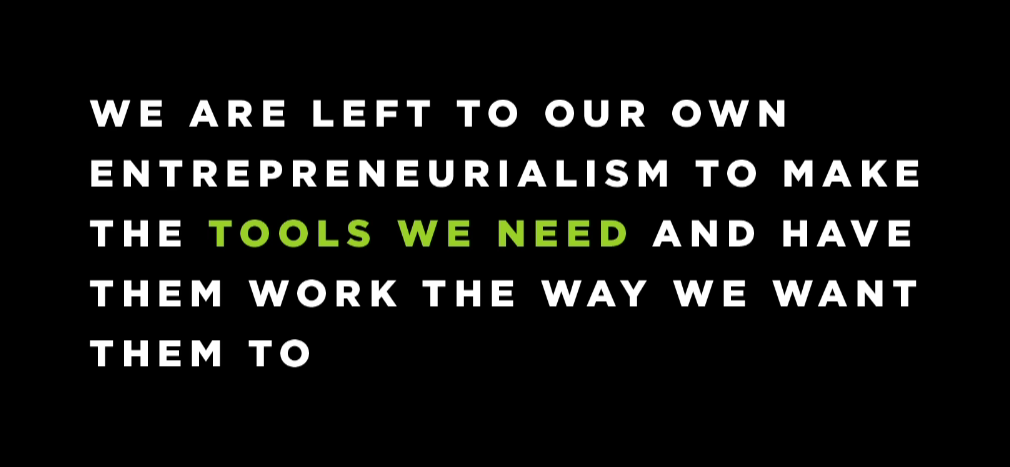
Chris Gentile
Have you discovered any barriers that inhibit integrating automation into practice?
[CG] Plenty! As I mentioned in the previous answer, there’s a gap in understanding what automation is. There’s the fear that associates automation with deskilling. From the previous example, this fear was having designers not knowing how to grade. Communicating the greater outcome or opportunity of automation is key. To borrow Earl’s antidote, this tool will allow us to make mistakes faster and process things quicker.
Duration is another barrier – turning a one or two day task into a 20-minute step doesn’t happen overnight. There is a lot of discovery and failure in process optimization. The hard part is to find where to start because it can be overwhelming. For me, I have to be able to get my arms around the larger workflow before seeing ways to make it better and how that optimization fits into the greater design process.
Similarly, firms need to take optimization seriously – it shouldn’t be treated as a side project. All firms want efficiency, but not all firms are willing to commit non-billable time to it – you have to take that leap of faith and make the financial investment.
What are some basic steps every landscape architecture firm can take to better incorporate technology into their design and implementation process?
[CG] I’ll share what TBG’s CTO, Greg Nichols, told me: celebrate technology – test things, break things, learn things. Technology touches all parts of your business operation. If you’re thinking about it as just a CAD tool, you’re not thinking of it right.
For me, I treat my projects as if they’re startups – that’s the entrepreneurial mindset in me I guess. These tools have the same uncertainty of success, so developing and assessing their value with the same scrutiny tends to steer them towards being successful.
The first step is knowing where you are today – establish a baseline. What’s your measuring stick? Make sure these measures can be clearly understood, provoke action, and that the data is transparent. Subjective measures are hard to gauge success with.
Next, create a feedback loop. With anything new, you’re assuming people will change their behavior in the way they use it. How are you going to validate the tool is being used as you intended? From what you learn, tune the engine – make tweaks, and test new ideas.
Learning is key in the process and failure is a common learning moment when you develop anything new, so don’t be afraid to fail. Much of what we do can and should be automated. Today, our design medium is more complex than ever, yet we’re still treating it like pen and paper – there’s got to be an easier way to do this.
—
This video was filmed on June 26, 2019 in Houston, TX as part of the Land8x8 Lightning Talks sponsored by Anova Furnishings.
Published in Blog, Cover Story, Featured




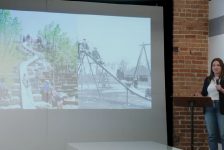

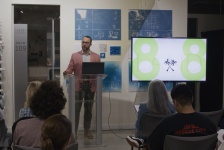
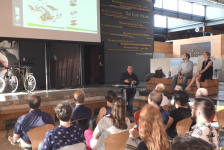
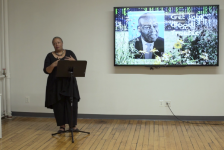
![Conflict Wood [Video]](https://land8.com/wp-content/uploads/2021/07/land8-cover-ipe-land8x8-zac-tolbert-224x150.png)
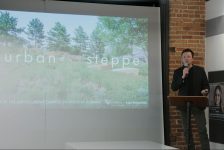
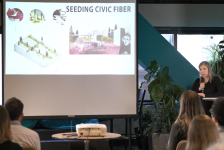
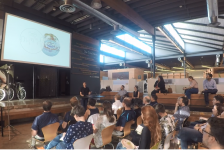
J. Robert (Bob) Wainner
I totally agree with what Earl Broussard had to say in this article (just an FYI, Earl was a Landscape Architecture
Professor of mine while I was a student @ Texas A&M University). As Earl states, Design decisions are “Human
Decisions”…..not “Computer Decisions”. IMO, it doesn’t matter how proficient you are with ANY “computer drawing
software program”…..it the DESIGN isn’t very creative & outstanding one…that’s within your Client’s budget/s,
that Computer drawing is meaningless.
I believe that many computer software drawing programs have become very useful to Landscape Architects,
but, I also believe way too many Landscape Architects have forgotten or never have learned “how to Draw or
sketch”. I believe that University Landscape Architecture Programs should be teaching their Students
“Hand Drawing & Sketching skills”…..as those skills are a very vital part of the “Design Process”.
Over the years, I have seen some Landscape Architect’s Portfolios with very poor “autoCAD” and “computer
generated Color Renderings”……it’s great if you use “computer software”, but, it still needs to be professional…
easy to understand, strong graphics.
I’m thinking of those fantastic movies we’ve been seeing over the years…with the “computer generated
special effects”. It’s my understanding that with movies like: Star Wars, Prometheus, The Last Star Fighter, Etc…
all began with “Hand Drawn” sketches….to create the designs for space ships, aliens, various scenes…
then, the “computer design specialists” take those “Hand Drawn” sketches and create those incredible
“computer generated” movies we all love watching.
So, I believe what Earl Broussard may have been implying here is…..that maybe, we need BOTH Hand Drawing
and Computer software skills. For me, when I went out on my own in early 1991 @ the Age of 41, I became
so incredibly busy…couldn’t find the time to learn “autoCAD”, so, I have stayed with what I know best…..
“Hand Drawings” for all of my Design Projects.
J. Robert (Bob) Wainner